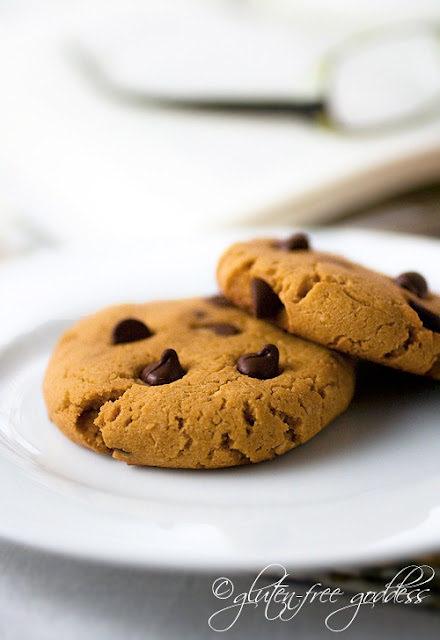
To Do List:
#1 – Get a goat.
Seriously. Those four-legged, milk-giving wonders sure have worked their way into my heart. After spending morning after delightful morning feeding, grooming, and of course milking them, I have fallen into a total goat bliss-out. All I want for Christmas is a dairy goat to call my own. Now if only I had a backyard…
I think the most rewarding part about being around these animals is the reciprocal nature of your relationship - you feed them and they feed you. It’s incredible! Again, getting back to the source of where food comes from is such a pleasure for me, and being able to look the creature in the eye who is literally going to give me breakfast, feels like divine gift.
I hadn’t eaten dairy products, save for butter and ghee, in quite some time, and I had never tried raw dairy before. Happily, I found it really worked for my body. I eased my way in slowly and found that my homemade goat yogurt was the easiest to digest, I suppose because it was full of enzymes and
friendly bacteria. This discovery was so moving that I had to share.
Yes, you can do this!Surprise! Yogurt is
extremely easy to make. You may have been convinced otherwise by commercial yogurt makers at the health food store, which give you the impression that special equipment is required, or you may think that you need to obtain some kind of special culture to inoculate your milk with, but happily, neither is the case! You hold the power and the ability to make this healthful food right at home with things you probably have on hand. You’re pretty pumped, eh? Thought so.

You will need:
A large pot to heat the milk in
A candy thermometer
½ cup good quality, organic plain yogurt with live active cultures (or ½ cup yogurt from a previous batch of homemade)
1 liter organic, whole milk, non-homogenized
Directions:
1. Gently heat the milk to 180 F (82 C), then allow it to cool to 110 F (43 C).
2. Stir in yogurt and pour mixture into a shallow glass, enamel, or stainless steel container.
3. Cover the container and let sit in a warm place (about 150 F / 65 C), such as a gas oven with the pilot light on, overnight.
4. In the morning, transfer to a glass jar and refrigerate.
Variation: Raw Milk Yogurt
I know that there is a lot of controversy surrounding raw milk, but my personal opinion is that if you are going to consume dairy, it’s the most holistic way to go. Raw milk has not been pasteurized, so it retains all of its enzymes and essential vitamins that are destroyed through heating. It may be difficult to find as it is not legal for retail sale in many states, and in Canada you would have to know a farmer to get yours direct. Not an easy task, but well worth the effort I believe.
You will need:
A large pot to heat the milk in
A candy thermometer
½ cup good quality, organic plain yogurt (or ½ cup yogurt from a previous batch of homemade)
1 liter organic, raw whole milk, non-homogenized
Directions:
1. Place 1 liter raw milk in a double boiler and heat to 110 F (43 C).
2. Remove 2 tablespoons milk and add 1 tablespoon yogurt.
3. Stir well and pour contents into a one-liter glass jar. Add another 2 tablespoons plus 2 teaspoons of yogurt to the jar, stir well and cover tightly.
4. Place jar in a warm spot (95 F/ 35 C), like a dehydrator, overnight.
5. Transfer to the refrigerator.
Make it a routine:
Every time you make your own yogurt, remember to save a little bit of for your next batch.
Your homemade yogurt is not going to be as thick as regular store-bought yogurt, but I like the smooth creaminess of it. It is wonderful as a base for smoothies, as a topping for pancakes, you can blend it with some fresh herbs for a dressing (mint is delicious!) or even use it instead of whipped cream for dessert. If you want to flavour your yogurt, you can add crushed fresh fruit, jam (
the fig one is ridiculous!), maple syrup, or raw honey.
You can make yogurt with any type of whole milk, but I would insist on buying organic and choosing goat over cow. Yes, you heard me correctly. Remember this awesome post:
Goat is the New Cow? Yuh-huh.
And just for the record, a good-quality goat milk should not taste “goaty” – it should taste almost like cow’s milk, but a little sweeter, in my opinion. I do know that if a male goat (buck) is around the does, especially during milking time, their odor can be absorbed by the milk, as it is rather penetrating. But I spent the last month in close connection to just the females and they do not smell at all, nor does their milk give off that familiar goaty-ness we don’t really dig in our morning coffee, right?
Go forth and conquer! Making yogurt yourself is a totally satisfying culinary activity, and will surely make you feel like a super hero in the kitchen. So give yourself all the credit your deserve, and a really delicious breakfast to boot.













